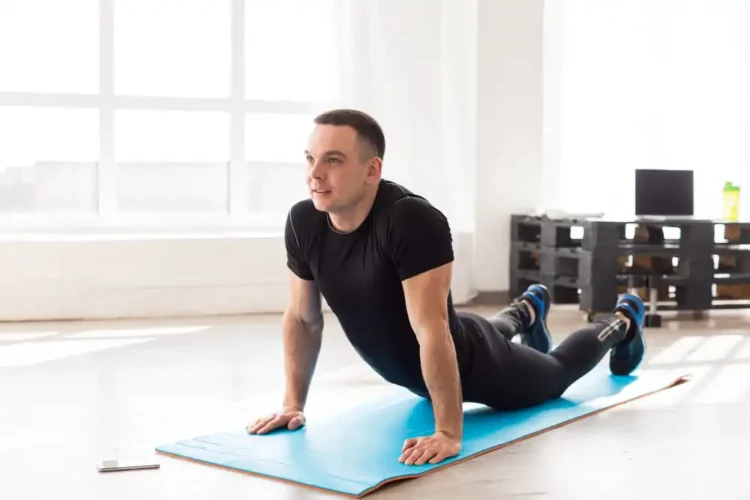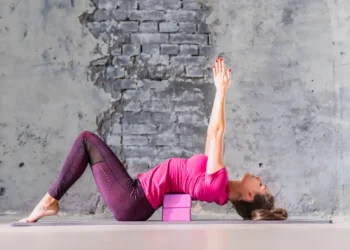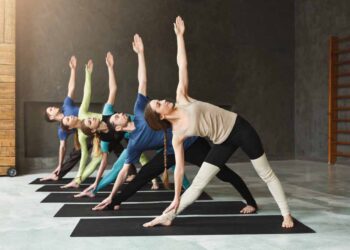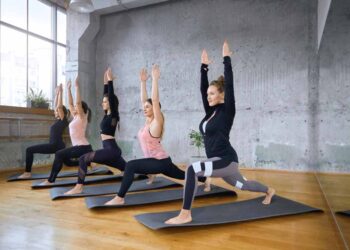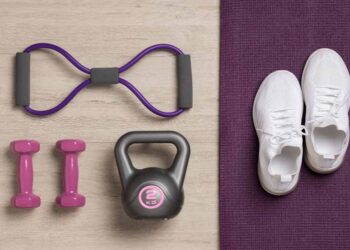Have you ever wondered what makes Pilates such a transformative form of exercise? It’s not just about the movements or the flexibility it builds. There are deeper principles at play that unlock the true power of Pilates and take your practice to a whole new level. So, what are these principles, and how can you master them to reap maximum benefits?
In this article, we will delve into the core values of Pilates, exploring the fundamental principles that form the backbone of this practice. From understanding the philosophy behind Pilates to diving into the techniques and benefits, we will break down each principle, equipping you with the knowledge to elevate your Pilates experience.
Key Takeaways:
- Understanding the Pilates principles is essential for maximizing the benefits of your Pilates practice.
- Mastering the principles of breath, concentration, control, precision, center, and flow will enhance your posture, strength, and flexibility.
- Integrating these principles into your practice fosters body awareness and efficient movement.
- The Pilates principles provide a foundation for ongoing growth and improvement in your Pilates journey.
- Stay tuned as we explore each principle in detail and provide practical tips for incorporating them into your Pilates routine!
The Importance of Breath in Pilates
Breath is a fundamental aspect of Pilates that should not be underestimated. Joseph Pilates believed that correct breathing was crucial for overall health, and this belief is reflected in the principles of the Pilates method.
“Breathing well in Pilates can improve neural sensitivity, postural issues, and pelvic floor health.”
Deep and conscious breathing plays a pivotal role in activating the core muscles and facilitating movement in Pilates. By practicing diaphragmatic breathing, which involves using the diaphragm to draw air deeply into the lungs, individuals can enhance the impact of their exercises.
Beyond its physical benefits, proper breathing in Pilates also has mental advantages. By focusing on the breath, individuals can reduce stress, calm the mind, and increase mindfulness. It creates a sense of inner peace and allows for a deeper mind-body connection during the practice.
Teaching people to breathe well is an essential part of Pilates instruction. Educating individuals on the importance of diaphragmatic breathing and its impact on movement can empower them to maximize the benefits of their Pilates practice, whether it be for rehabilitation, fitness, or general well-being.
The Power of Concentration in Pilates
In the practice of Pilates, concentration plays a vital role in achieving optimal results. With every exercise, the mind must be fully engaged, focusing on the body’s movements with mindfulness and intent.
Concentration in Pilates goes beyond mere physical effort. It involves bringing a heightened awareness to every aspect of the movement, from the alignment of the spine to the engagement and release of muscles. By concentrating on these details, individuals develop a deep body awareness that carries over into their daily lives, improving overall movement efficiency.
Moreover, concentration in Pilates brings about a sense of relaxation and mental clarity. As the mind becomes fully absorbed in the present moment, stress and tension dissipate, allowing for a deeper connection between the mind and body. The act of concentrating on the movements engages and releases muscles, promoting relaxation while simultaneously working towards strengthening and toning them.
Mindful movement, through Pilates concentration, has been proven to have numerous benefits. Research shows that it can reduce stress levels, lower blood pressure, and improve cognitive function. By incorporating concentration into their Pilates practice, individuals not only enhance their physical well-being but also experience improved mental and emotional well-being.
“Concentration is the key that unlocks the door to the benefits of Pilates. By fully engaging the mind in each movement, we tap into the power of our body’s innate abilities and unlock our true potential.”
In summary, concentration is a fundamental element of Pilates practice. It heightens body awareness, promotes relaxation, and engages and releases muscles. Through mindful movement and concentration, individuals can experience the physical and mental benefits that Pilates has to offer. So the next time you step onto the Pilates mat, remember to channel your concentration and unlock the power within.
Understanding the Center in Pilates
In Pilates, the center, also known as the powerhouse, refers to the core muscles in the body. These core muscles, including the abdominal muscles, back muscles, and pelvic floor muscles, are essential for maintaining stability and proper alignment during Pilates exercises. The center acts as a strong foundation, enabling individuals to perform movements with control and precision.
Proper activation of the center is crucial for maximizing the benefits of Pilates. It involves a balance of muscle relaxation and contraction, rather than constant bracing or excessive tension. By activating the core muscles, individuals can improve their posture, enhance overall strength, and promote optimal muscle function.
“Activating the center in Pilates allows for better coordination and integration of the entire body,” says Sarah Thompson, a certified Pilates instructor at the renowned Pilates Center. “It’s about connecting to your powerhouse and utilizing that strength to support your movements.”
“Engaging the core not only strengthens the muscles, but it also improves core stability and balance. It’s the key to unlocking the full potential of each Pilates exercise,” adds Thompson.
One of the key elements in connecting to the center is proper breathing. Good breathing habits can help individuals establish a strong foundation for movement and activate the core muscles effectively. By focusing on diaphragmatic breathing, individuals can enhance their core activation and improve their Pilates practice.
The Power of Core Activation
Core activation in Pilates involves engaging the deep core muscles, such as the transverse abdominis and pelvic floor muscles, while maintaining a relaxed state in the superficial muscles, such as the rectus abdominis and external obliques. This balanced activation allows for efficient movement without unnecessary tension or bracing.
By aligning the breath with core activation, individuals can deepen their connection to the center and optimize their Pilates practice. As they inhale, they can focus on lengthening and creating space in the body, while exhaling facilitates the engagement of the deep core muscles, creating stability and support.
Core activation not only improves physical performance but also enhances body awareness and proper muscle function. It allows individuals to move with ease, align their body correctly, and prevent injuries. By integrating core activation into their Pilates practice, individuals can cultivate a strong center and unlock their full potential.
Pilates Center Activation Table
| Exercise | Core Muscles Activated |
| Single Leg Stretch | Transverse abdominis, obliques |
| Plank | Transverse abdominis, rectus abdominis, obliques, glutes |
| Pilates Roll Up | Transverse abdominis, rectus abdominis |
| Swimming | Transverse abdominis, erector spinae |
| Teaser | Transverse abdominis, obliques, rectus abdominis |
Conclusion
Mastering the Pilates principles is the key to unlocking the full potential of your Pilates practice. These principles, including breath, concentration, control, precision, center, and flow, form the foundation of Pilates technique and philosophy. By integrating these principles into your daily practice, you can enhance your physical fitness, improve your posture and alignment, and cultivate a deep sense of body awareness.
Remember, Pilates is a journey of ongoing learning and mastery. As you continue to deepen your understanding of the Pilates principles, you will experience ongoing growth and improvement in your practice. Each session provides an opportunity to integrate these principles in every movement and exercise, allowing you to discover new levels of strength, flexibility, and control.
Embrace the Pilates principles as guiding principles in your practice, and you will begin to experience the transformative power of Pilates in your mind and body. With consistent dedication, patience, and ongoing exploration, you will witness the remarkable results that come from integrating these principles into your Pilates practice.

